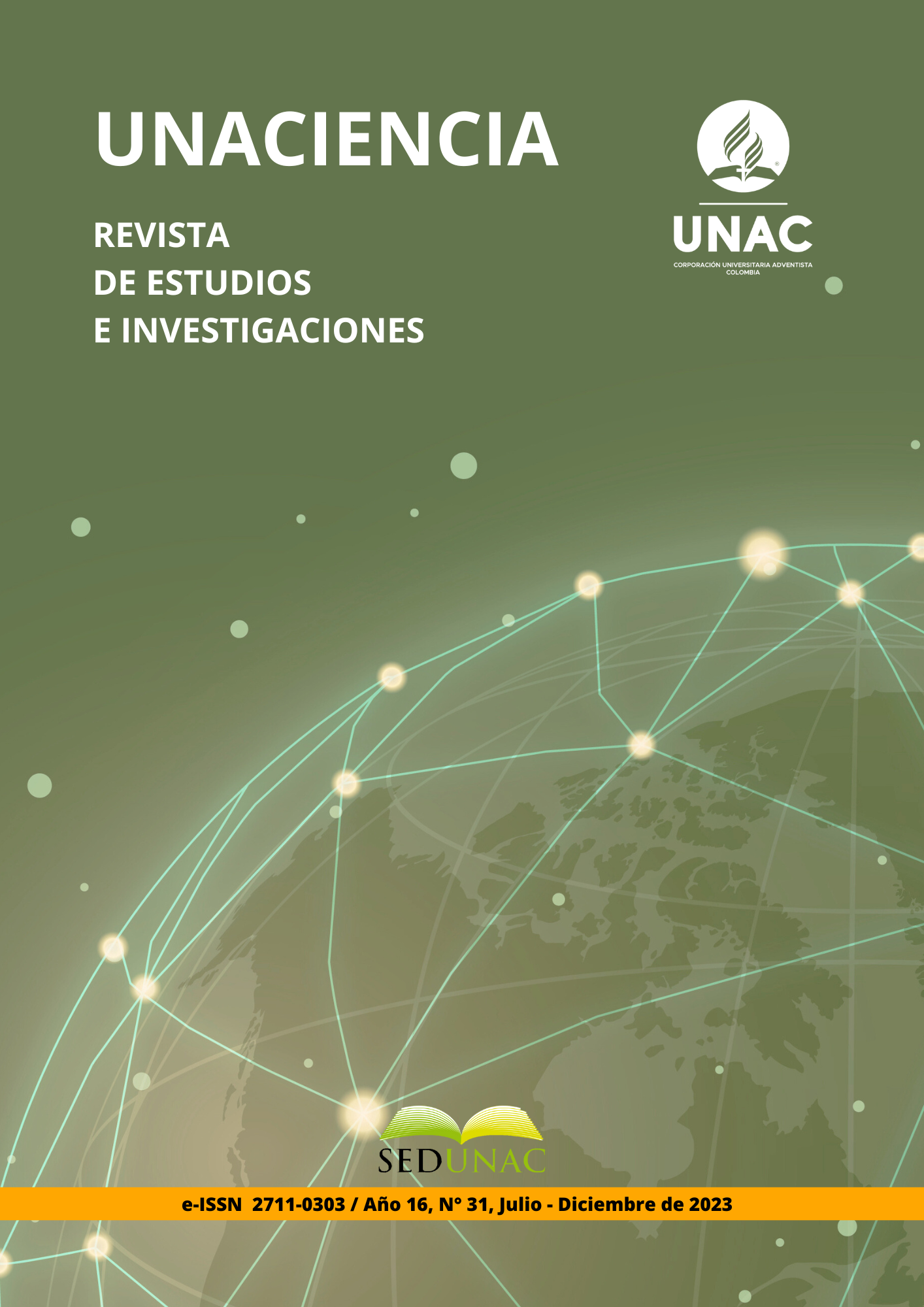Predicción del rendimiento académico en la UNADECA por medio de sistemas de clasificación
Contenido principal del artículo
Resumen
Predecir el rendimiento académico de los estudiantes no es solo una tarea que atrae a los investigadores sino también al personal administrativo de la facultad universitaria. Es posible crear modelos efectivos mediante algoritmos específicos para minería de datos educativos supervisados y no supervisados. Al conjunto de datos se le aplicaron técnicas de limpieza y codificación. La ejecución de los algoritmos y la comparación de sus métricas permitieron determinar los cursos a los que se debe dar asistencia con mayor atención en la búsqueda de mejorar el rendimiento académico de los estudiantes. Los datos fueron fraccionados en dos grupos, uno para aprendizaje y otro para predicción. Se usaron algoritmos en el lenguaje Python y una herramienta gráfica, RapidMiner Studio. No se trabajaron agrupamientos por falta de información consistente en los datos originales. El algoritmo de clasificación que tuvo las mejores métricas fue el Random Forest superando en los distintos casos el 90% de accurracy. En cambio, RapidMiner el algoritmo con mejores resultados fue Gradient Boosted Trees con un accuracy del 93.6%, con la predicción específica del resultado final de aprobado o reprobado. Se hizo una comparativa por escuelas, con resultados muy similares para Enfermería, Psicología y Teología, con una precisión aproximada de 93%.
Descargas
Detalles del artículo

Esta obra está bajo una licencia internacional Creative Commons Atribución-NoComercial-SinDerivadas 4.0.
Citas
A Alférez, G. H., Esteban, O. A., Clausen, B. L., & Ardila, A. M. M. (2022). Automated machine learning pipeline for geochemical analysis. Earth Science Informatics, 15(3), 1683-1698. https://doi.org/10.1007/s12145-022-00821-8
Almasri, A., Alkhawaldeh, R. S., & Çelebi, E. (2020). Clustering-Based EMT Model for Predicting Student Performance. Arabian Journal for Science and Engineering, 45(12), 10067–10078. https://doi.org/10.1007/s13369-020-04578-4
Alsariera, Y. A., Baashar, Y., Alkawsi, G., Mustafa, A., Alkahtani, A. A., & Ali, N. (2022). Assessment and Evaluation of Different Machine Learning Algorithms for Predicting Student Performance. Computational Intelligence and Neuroscience, 2022, 1–11. https://doi.org/10.1155/2022/4151487
Altabrawee, H., Ali, O. A. J., & Ajmi, S. Q. (2019). Predicting Students’ Performance Using Machine Learning Techniques. JOURNAL OF UNIVERSITY OF BABYLON for Pure and Applied Sciences, 27(1), 194–205. https://doi.org/10.29196/jubpas.v27i1.2108
Babu, C., & Varghese, R. (2020). Predicting Student’ s Performance Using Educational Data Mining. 9(1).
Burman, I., & Som, S. (2019). Predicting Students Academic Performance Using Support Vector Machine. Proceedings - 2019 Amity International Conference on Artificial Intelligence, AICAI 2019, 756–759. https://doi.org/10.1109/AICAI.2019.8701260
Dhilipan, J., Vijayalakshmi, N., Suriya, S., & Christopher, A. (2021). Prediction of Students Performance using Machine learning. IOP Conference Series: Materials Science and Engineering, 1055(1), 012122. https://doi.org/10.1088/1757-899x/1055/1/012122
Domingos, P. (2012). A few useful things to know about machine learning. Communications of ACM, 55(10), 78–87. https://doi.org/10.1145/2347736.2347755
Gull, H., Saqib, M., Iqbal, S. Z., & Saeed, S. (2020). Improving Learning Experience of Students by Early Prediction of Student Performance using Machine Learning. 2020 IEEE International Conference for Innovation in Technology, INOCON 2020, 1–4. https://doi.org/10.1109/INOCON50539.2020.9298266
Hasan, H. M. R., Shahariar, A., & Rabby, A. (n.d.). Hasan, H. M. R., Rabby, A. S. A., Islam, M. T., & Hossain, S. A. (2019). Machine Learning Algorithm for Student’s Performance Prediction. In 2019 10th International Conference on Computing, Communication and Networking Technologies (ICCCNT) (pp. 1-7). Kanpur, India. https://doi.org/10.1109/ICCCNT45670.2019.8944629
Hasterok, D., Gard, M., Bishop, C. M. B., & Kelsey, D. (2019). Chemical identification of metamorphic protoliths using machine learning methods. Computers and Geosciences, 132(March), 56–68. https://doi.org/10.1016/j.cageo.2019.07.004
Jawad, S. M. D. (2021). Student Performance Analysis System Using Machine Learning. Journal of Resource Management and Technology, 12(84), 84–90.
Kamel, H., Abdulah, D., & Al-Tuwaijari, J. M. (2019). Cancer Classification Using Gaussian Naive Bayes Algorithm. Proceedings of the 5th International Engineering Conference, IEC 2019, 165–170. https://doi.org/10.1109/IEC47844.2019.8950650
Marius-Constantin, P., Balas, V. E., Perescu-Popescu, L., & Mastorakis, N. (2009). Multilayer perceptron and neural networks. WSEAS Transactions on Circuits and Systems, 8(7), 579–588.
Mierswa, Igno, and K. (2022). RapidMiner. RapidMiner Studio. https://rapidminer.com/
Osman, A. S. (2019). Data mining techniques: Review. International Journal of Data Science Research, 2(1), 1–4.
Priya, S., Ankit, T., & Divyansh, D. (2021). Student performance prediction using machine learning. Advances in Parallel Computing, 39(03), 167–174. https://doi.org/10.3233/APC210137
Rimadana, M. R., Kusumawardani, S. S., Santosa, P. I., & Erwianda, M. S. F. (2019). Predicting Student Academic Performance using Machine Learning and Time Management Skill Data. 2019 2nd International Seminar on Research of Information Technology and Intelligent Systems, ISRITI 2019, 511–515. https://doi.org/10.1109/ISRITI48646.2019.9034585
Vasani, V. P., & Gawali, R. D. (2013). Classification Performance Evaluation. Encyclopedia of Systems Biology, 3(3), 411–411. https://doi.org/10.1007/978-1-4419-9863-7_100213





